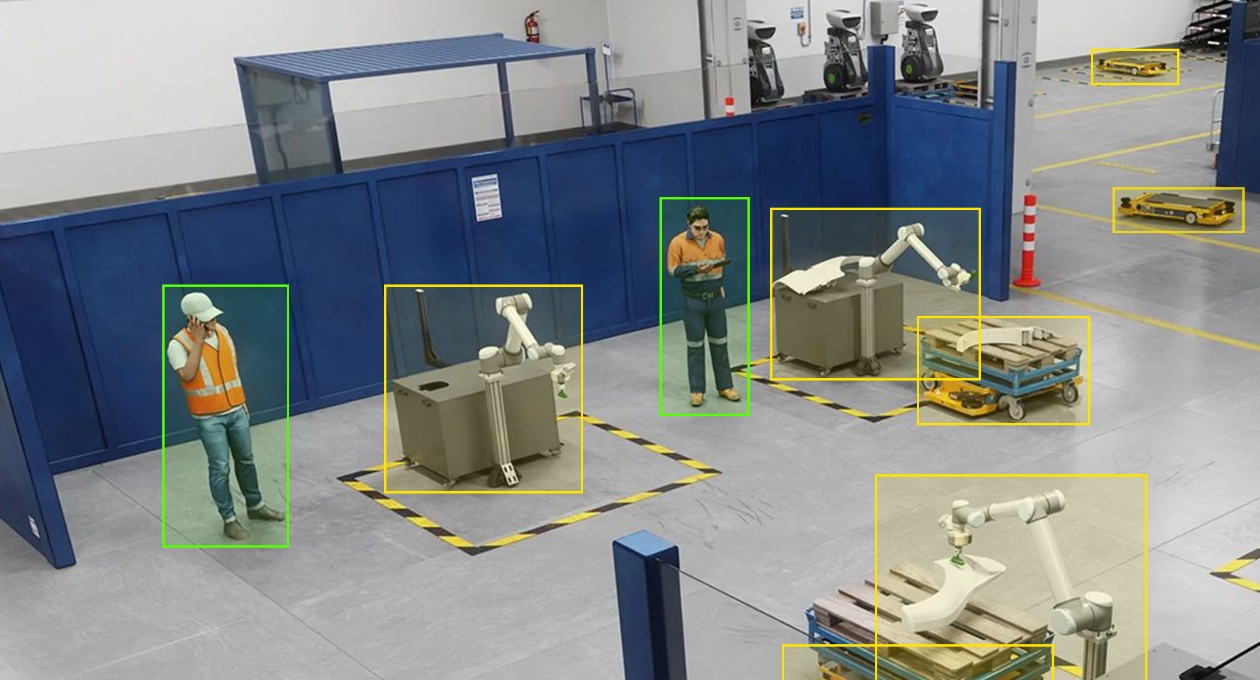NVIDIA today introduced the IGX edge AI computing platform for secure, safe autonomous systems.
IGX brings together hardware with programmable safety extensions, commercial operating-system support and powerful AI software — enabling organizations to safely and securely deliver AI in support of human-machine collaboration.
The all-in-one platform enables next-level safety, security and perception for use cases in healthcare, as well as in industrial edge AI.
Robots and autonomous systems are used to create “factories of the future,” where humans and robots work side by side, leading to improved efficiency for manufacturing, logistics and other workflows.
Such autonomous machines have built-in functional safety capabilities to ensure intelligent spaces stay clear of collisions and other safety threats.
NVIDIA IGX enhances this functional safety, using AI sensors around the environment to add proactive-safety alerts — which identify safety concerns before an incident occurs — in addition to existing reactive-safety abilities, which mitigate safety threats.
“Safety has long been a top priority for industrial organizations,” said Riccardo Mariani, vice president of industry safety at NVIDIA. “What’s new is that we’re using AI across sensors in a factory to create a centralized view, which can improve safety by providing additional inputs to the intelligent machines and autonomous mobile robots operating in the environment.”
For sensitive settings in which humans and machines collaborate — like factories, distribution centers and warehouses — intelligent systems’ safety and security features are especially critical.
Proactive Safety for the Industrial Edge
Three layers of functional safety exist at the industrial edge.
First, reactive safety is the mitigation of safety threats and events after they occur. For example, if a human walked into a robot’s direct route, the bot might stop, slow or shut down to avoid a collision.
This type of safety mechanism already exists in autonomous machines, per standard regulations. But reactive stops of an intelligent machine or factory line result in unplanned downtime, which for some manufacturers can cost hundreds of thousands of dollars per hour.
Second, proactive safety is the identification of potential safety concerns before breaches happen. NVIDIA IGX is focused on enabling organizations to add this safety layer to intelligent environments, further protecting workers and saving costs. It delivers high-performance, proactive-safety capabilities that are built into its hardware and software.
For example, with IGX-powered proactive safety at play, cameras in the warehouse might see a human heading into the path of a robot. It could signal the bot to change routes and avoid being in the same field of movement, preventing the collision altogether. IGX can also alert employees and other robots in the area, rerouting them to eliminate the risk of a backup across the factory.
And third, predictive safety is the anticipation of future exposure to safety threats based on past performance data. In this case, organizations can use simulation and digital twins to identify patterns of intersections or improve a factory layout to reduce the number of safety incidents.
One of the first companies to use IGX at the edge is Siemens, a technology leader in industrial automation and digitalization, which is working with NVIDIA on a vision for autonomous factories. Siemens is collaborating with NVIDIA to expand its work across industrial computing, including with digital twins and for the industrial metaverse.
Siemens is already adding next-level perception into its edge-based applications through NVIDIA Metropolis. With millions of sensors in factories, Metropolis connects entire fleets of robots and IoT devices to bring AI into industrial environments, making it one of the key application frameworks for edge AI running on top of the IGX platform.
Zero-Trust Security, High Performance and Long-Term Support
In addition to safety requirements, edge AI deployments have unique security needs compared to systems in data centers or the cloud — since humans and machines operate side by side in edge environments.
The IGX platform has a hardened, end-to-end zero-trust security architecture that starts at the system level and expands through over-the-air updates from the cloud. Advanced networking and a dedicated security controller are paired with NVIDIA Fleet Command, which brings secure edge AI management and orchestration from the cloud.
The first product offering of the IGX platform is NVIDIA IGX Orin, the world’s most powerful, compact and energy-efficient AI system for accelerating the development of autonomous industrial machines and medical devices.
IGX Orin developer kits will be available early next year. Each includes an integrated GPU and CPU for high-performance AI compute, as well as an NVIDIA ConnectX-7 SmartNIC to deliver high-performance networking with ultra-low latency and advanced security.
IGX also brings up to 10 years of full-stack support from NVIDIA and leading partners.
Learn more about IGX and other technology breakthroughs by watching the latest GTC keynote address by NVIDIA founder and CEO Jensen Huang:
